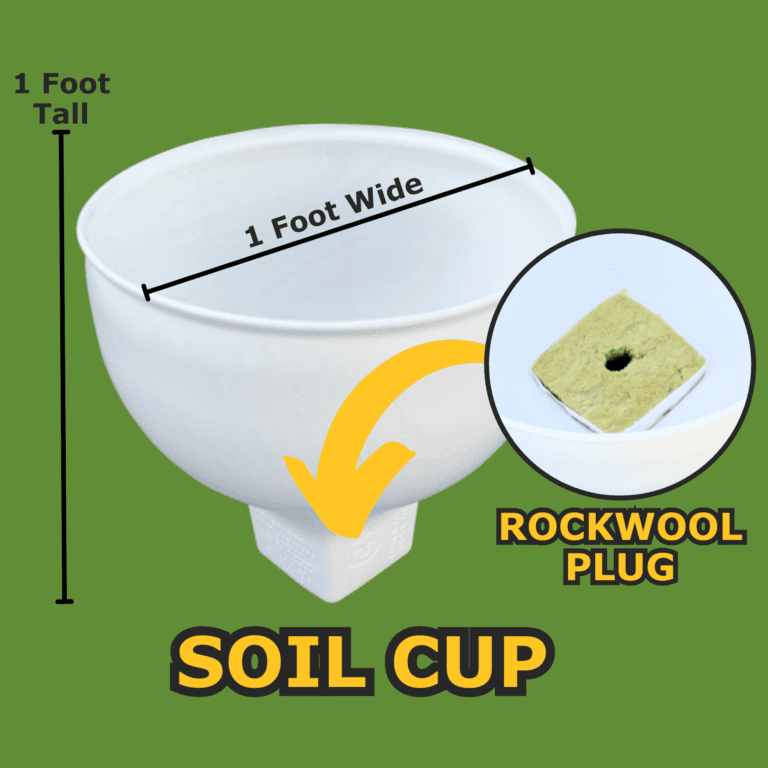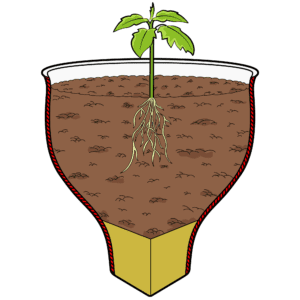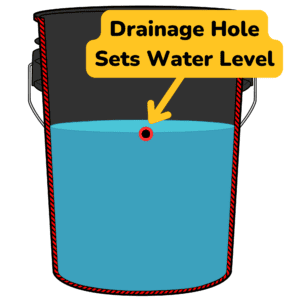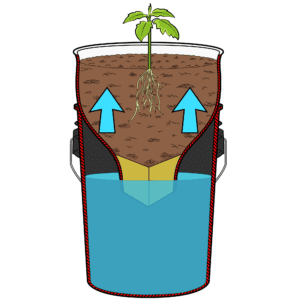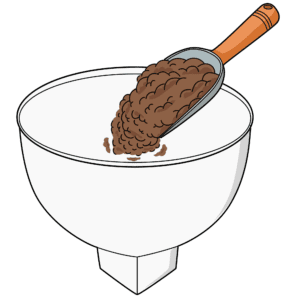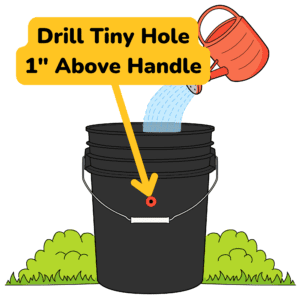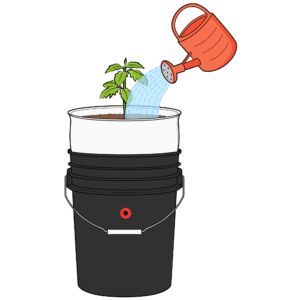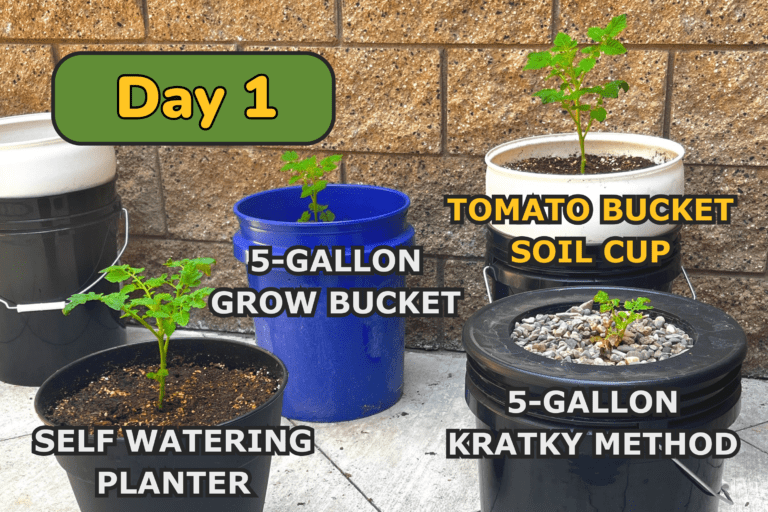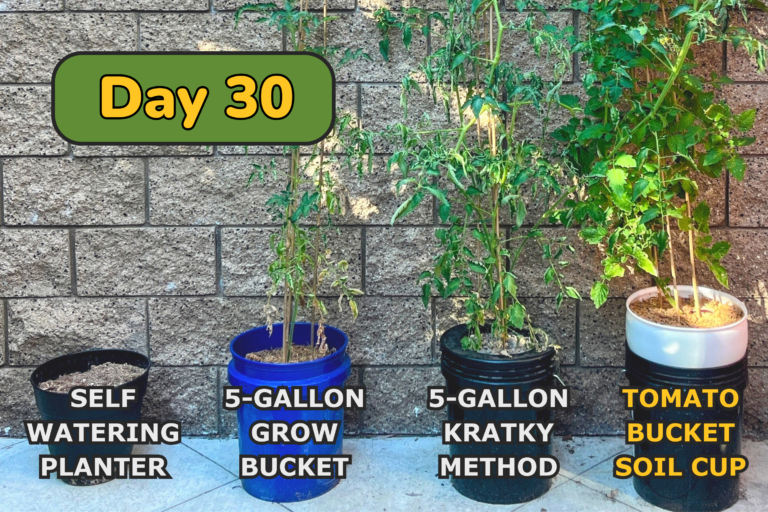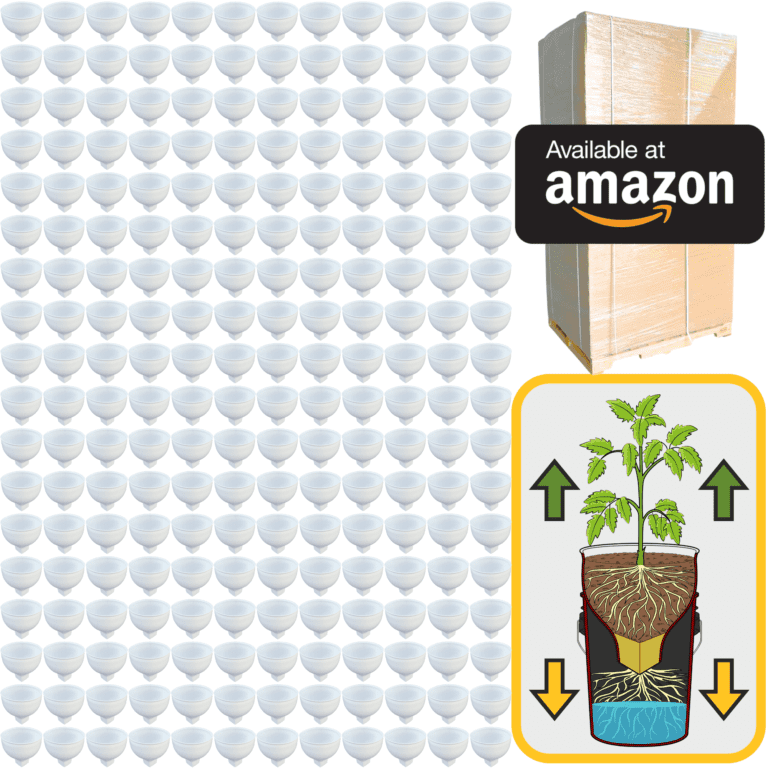A drip system is one of the most versatile and controlled ways to grow plants hydroponically, offering the precision that can make all the difference for healthy, vibrant growth. With a drip system, each plant receives a slow, steady drip of nutrient solution right at its base, delivered through small tubes connected to a central reservoir. This system allows you to control exactly how much water and nutrients each plant gets, along with the timing and frequency of the feedings. If you’re new to hydroponics, a drip system offers a fantastic balance of control and simplicity, giving you the power to adjust each plant’s care while keeping things easy to manage.
In a drip system, plants are grown in containers filled with a supportive medium, such as coco coir, clay pebbles, or perlite. Each plant has its own drip emitter, which is set up to deliver the nutrient solution in a slow trickle, directed right at the plant’s root zone. The system operates on a timer, so the nutrient solution is delivered exactly when you want it to be, whether that’s multiple times a day or just once. Because each drip emitter can be adjusted, you can tailor the flow for each plant, meeting its unique needs for water and nutrients. This customization is one of the biggest advantages of a drip system, as it allows you to grow different types of plants together in the same setup, even if they have slightly different requirements.
A drip system is also incredibly efficient because every drop of nutrient solution is delivered exactly where it’s needed, reducing waste. As the nutrient solution drips down through the growing medium, it saturates the roots, allowing them to absorb what they need. In many setups, the excess solution drains back into the reservoir, where it can be recirculated. This closed-loop system conserves both water and nutrients, as the solution is reused until it’s depleted. If you’re aiming for an environmentally conscious setup, a recirculating drip system is a fantastic choice, as it uses resources efficiently without compromising on plant health.
Choosing the right growing medium is important in a drip system, as it holds moisture between feeding cycles and provides support for the roots. Coco coir is a popular choice because it retains moisture well and resists pests, while clay pebbles and perlite provide good drainage and air flow, ensuring that roots have access to oxygen. The medium you choose will affect how frequently you need to water, as some materials hold water longer than others. A good growing medium will keep roots hydrated while also allowing excess water to drain away, creating a balance of moisture and air that promotes strong, healthy growth.
One of the joys of a drip system is the control it gives you over the entire growing process. By adjusting the frequency and duration of the drip cycles, you can meet each plant’s individual needs. Fast-growing greens like lettuce and basil may need more frequent drips to keep up with their water and nutrient needs, while slower-growing or drought-tolerant plants do well with fewer cycles. As you get familiar with the system, you’ll notice how each plant responds, allowing you to fine-tune the schedule and flow rate for the best possible results. This level of customization makes a drip system ideal for both beginners and experienced growers, as it can be as simple or as detailed as you want it to be.
Maintaining a drip system is straightforward, but it does require a little attention to keep everything running smoothly. The pump and timer are essential to the system, as they control the flow of nutrients, so regular checks ensure they’re working correctly. The nutrient solution in the reservoir also needs to be monitored for pH and nutrient concentration, as this ensures plants are absorbing what they need for growth. Most plants prefer a pH range between 5.5 and 6.5, as this slightly acidic environment allows them to take in nutrients effectively. Using a pH meter or test strips, you can keep the solution in the right range. Checking the electrical conductivity (EC) of the solution also helps, as it tells you the strength of the nutrient mix and whether it needs to be refreshed.
Drip systems work well with a variety of plants, making them perfect for mixed gardens. Leafy greens like spinach and kale grow fast and full, while herbs like thyme and parsley thrive with the steady, gentle feeding a drip system provides. Fruiting plants, such as tomatoes, strawberries, and peppers, benefit from the regular feeding, growing strong and productive with the right drip schedule. Because the drip system allows you to adjust each emitter, you can easily give every plant exactly what it needs, ensuring a healthy, balanced garden where every plant can flourish.
One of the most rewarding aspects of a drip system is the opportunity it gives you to engage with each plant on a personal level. You’ll become attuned to the subtle signals plants give off, whether they’re getting just the right amount of water or needing a slight adjustment. Each new leaf and budding flower is a sign that the plant is happy and thriving, and with a drip system, you’ll feel deeply connected to their progress. Over time, you’ll develop a sense of rhythm with the system, knowing just when each plant needs feeding and becoming familiar with the changes that indicate healthy growth.
With a drip system, you’re not only growing plants; you’re creating an efficient, finely tuned environment that maximizes each plant’s potential. The control and customization this system offers turn hydroponic gardening into an art, allowing you to experiment with different schedules, nutrient mixes, and growing mediums. Every adjustment you make becomes an opportunity to learn more about the needs of your plants, deepening your knowledge and appreciation for the science and art of hydroponics.
Using a drip system can feel like working in harmony with the plants, as you respond to their needs with precision and care. Each drop of nutrient solution contributes to a healthy, thriving plant, and every time you fine-tune the settings, you’re nurturing your plants with intention. Drip systems offer both reliability and adaptability, making them suitable for any grower who wants to achieve productive, healthy plants while managing resources efficiently.
A drip system allows you to take a hands-on approach, giving you the flexibility to grow a diverse range of plants with ease. Watching your garden thrive under the steady, gentle flow of nutrients, knowing that each plant is getting exactly what it needs, is incredibly satisfying. With this setup, you’re building a garden that is not only productive but sustainable, supporting each plant in a balanced, mindful way. Whether you’re growing fresh herbs for your kitchen, experimenting with leafy greens, or nurturing fruiting plants, a drip system gives you the foundation to grow confidently and successfully. It’s a method that turns hydroponics into a rewarding journey, allowing you to cultivate a garden that’s healthy, abundant, and deeply fulfilling.

